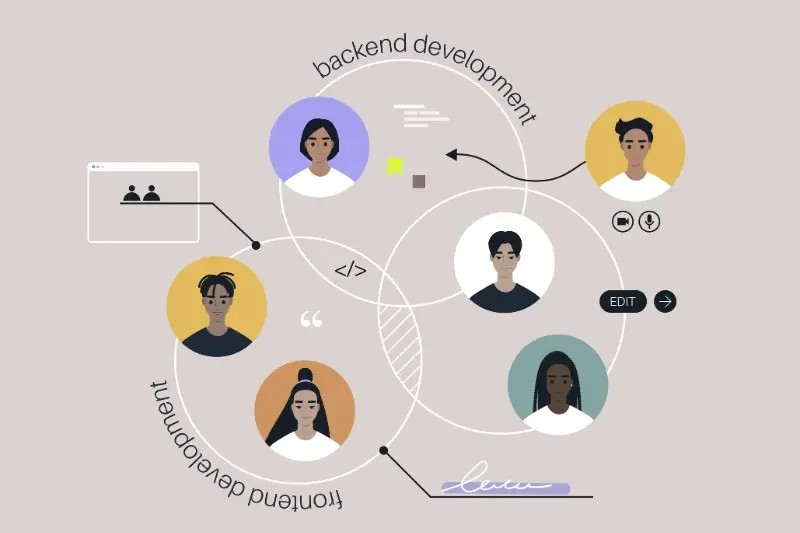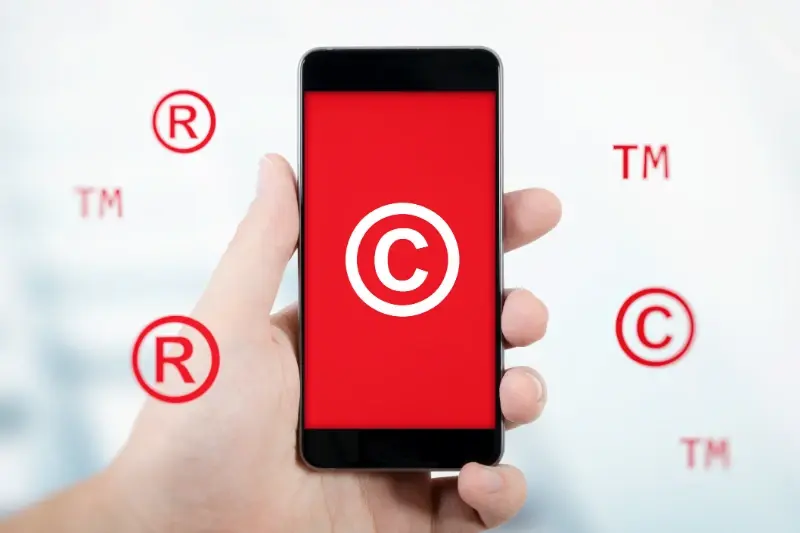Vibe Coding Success Stories: Real Apps Built Without Traditional Programming
A personal trainer with zero coding experience launches a fitness app that gets thousands of downloads in its first month. A primary school teacher builds an educational platform that transforms how children learn maths. A restaurant owner creates her own ordering system that boosts sales by 40%. These aren't fairy tales—they're real success stories happening right now thanks to something called vibe coding.
The days when you needed years of programming knowledge to build a mobile app are rapidly disappearing. New tools and platforms are making it possible for anyone with a good idea to create professional-quality apps without writing a single line of traditional code. We're talking about teachers, shop owners, fitness instructors, and artists who are building genuinely successful digital products.
The most successful apps often come from people who understand real problems, not just programming languages
What makes these stories so compelling isn't just that non-technical people are building apps—it's that they're building better apps. When you combine deep industry knowledge with modern no-code tools, something magical happens. You get solutions that actually solve real problems instead of just showing off clever programming tricks. These vibe coding success stories prove that sometimes the best person to build an app isn't a programmer at all.
What Is Vibe Coding and Why Does It Matter
Right, let's clear this up straight away—vibe coding isn't some mystical programming method where you code based on your mood! It's actually a term that's been floating around development circles to describe building apps using visual, drag-and-drop tools rather than traditional programming languages. Think of it as building with digital blocks instead of writing lines of code.
The name comes from the idea that you're working with the "vibe" or feel of what you want to create, rather than getting bogged down in technical syntax. You focus on the user experience, the flow, the look and feel—all the things that make an app actually useful to people.
Why This Approach Works So Well
After years of working with clients, I've noticed something interesting: the best app ideas don't always come from programmers. They come from people who understand real problems. Teachers who know what students struggle with, shop owners who see what customers need, fitness trainers who understand motivation.
These visual development platforms have made it possible for domain experts to build solutions without spending months learning programming languages. The tools handle the technical heavy lifting whilst you focus on solving the actual problem.
- No need to learn complex programming syntax
- Visual interface makes design decisions clearer
- Faster prototyping and testing of ideas
- Lower barrier to entry for non-technical founders
The E-commerce App That Started in a Coffee Shop
Sarah was sitting in her local coffee shop when she had the idea that would change her life. She'd been selling handmade jewellery at weekend markets for months, but carrying heavy tables and setting up stalls was wearing her out. What if she could sell her creations through an app instead?
The problem was obvious—Sarah knew nothing about coding. She'd tried looking at programming tutorials online but they made her head spin. That's when she discovered visual development tools that let her build an app by dragging and dropping elements, just like arranging furniture in a room.
From Sketch to Store in Six Weeks
Using a no-code platform, Sarah created her jewellery app in just six weeks. She started with a simple design, added product photos, and connected a payment system. The whole process felt more like building a website than writing complex code.
Here's what Sarah included in her first app version:
- Photo gallery showing her jewellery collection
- Simple checkout process with card payments
- Customer messaging system for custom orders
- Basic order tracking for deliveries
Within three months, Sarah's app had generated more sales than her entire previous year at markets. She'd proved that non-technical founders can build successful apps when they have the right tools and a clear vision.
Start simple and add features gradually—Sarah's success came from launching quickly with basic features rather than waiting for a 'perfect' app.
How a Teacher Built a Learning Platform Without Code
Sarah had been teaching primary school for twelve years when she noticed something that bothered her. Her students were brilliant at using tablets and phones, but the educational apps available were either too expensive for the school budget or didn't match what she was actually teaching in class. She'd spend hours searching for apps that covered fractions the way she taught them, or spelling games that used the words from their current topic.
One evening, after another frustrating search for decent maths apps, Sarah decided to build her own. Now, she'd never written a line of code in her life—she could barely manage the school's attendance system! But she'd heard about visual development tools that let you create apps by dragging and dropping elements rather than typing complicated instructions.
Building Something That Actually Worked
Sarah started with a simple quiz app about the solar system. She used a no-code platform to create colourful question cards with pictures of planets, drag-and-drop exercises, and a points system that her students would love. The whole thing took her three weekends to build, testing it with her own class as she went.
What started as a single quiz app grew into a full learning platform. Sarah added spelling games, times tables practice, and even a section where students could upload their own drawings and stories. For schools looking to supplement their existing classroom technology, her app proved that custom solutions often work better than off-the-shelf products. The best part? She could update content instantly when they moved to new topics, something the expensive educational apps couldn't do.
The Fitness App Success From a Personal Trainer
Marcus had been training clients for twelve years when he spotted something that really annoyed him. His clients kept forgetting their workout routines between sessions—they'd turn up the next week having done completely different exercises or skipping parts altogether. He was spending half his time re-explaining programmes he'd already covered.
Being a personal trainer doesn't exactly prepare you for building apps, but Marcus wasn't going to let that stop him. He started exploring visual development tools and found he could create something that worked without writing a single line of code. The app he built lets his clients log their workouts, track their progress, and get reminders about their next session.
I thought I'd need to hire a programmer and spend thousands, but I built the whole thing myself in about six weeks using drag-and-drop tools
What started as a solution for his own clients turned into something much bigger. Other trainers in his area started asking if they could use it too. Now Marcus runs a subscription service for fitness professionals whilst still training his original clients. The app handles booking, progress tracking, and even payment processing—all built using visual development platforms that made sense to someone who'd never touched code before.
When Artists Create Digital Galleries Using Visual Tools
Marina had been painting for twenty years, selling her work at local galleries and craft fairs. She'd always dreamed of having her own gallery space but the rent was just too expensive. That's when she discovered visual app builders—tools that let you create apps by dragging and dropping elements instead of writing code.
Using these visual tools, Marina built her own digital gallery app in just three weeks. She could upload photos of her paintings, add descriptions, and even set up a payment system for buyers. The drag-and-drop interface made it simple; she'd select an image component, drop it where she wanted, then connect it to her photo library.
Building Without Barriers
What impressed me most about Marina's story was how she handled the technical stuff. She didn't need to understand databases or programming languages—the visual builder handled all that behind the scenes. She just focused on what she knew best: showcasing her art and connecting with customers.
Within six months, Marina's app had over 500 downloads and she'd sold more paintings than in her previous two years combined. The app gave her complete control over her brand and customer relationships, something she'd never had when relying on other people's galleries.
The Restaurant Owner Who Built Her Own Ordering System
Maria owned a small Italian restaurant in Manchester and was losing customers to delivery apps that charged massive commission fees. She needed her own ordering system but couldn't afford to hire developers—the quotes she received were well beyond her budget.
Using visual development tools, Maria built a complete ordering system in just three weeks. Her app allowed customers to browse her menu, customise orders, and pay directly without any third-party fees eating into her profits.
The Business Impact
Within two months of launching her app, Maria's takeaway orders increased by 60%. More importantly, she was keeping 100% of her revenue instead of losing 30% to delivery platforms. The app paid for itself within the first month.
Maria didn't stop there—she added features like loyalty points, table reservations, and even a simple inventory system to track her most popular dishes. What started as a basic ordering app became the backbone of her restaurant's operations.
Why This Approach Worked
Maria understood her customers and her business better than any external developer could. She knew exactly what features mattered and could test changes immediately with her regular customers. This direct feedback loop meant she could improve the app quickly based on real user behaviour.
Start with one core feature that solves your biggest problem, then add more functionality as you learn what your customers actually want.
Real Results and What These Stories Teach Us
Looking at these success stories, one thing becomes crystal clear—you don't need to be a programmer to build something amazing. The coffee shop owner who created an e-commerce app, the teacher who built a learning platform, the personal trainer with his fitness app—none of them had coding experience when they started. Yet they all built apps that people actually use and love.
What strikes me most about these stories is how different each journey was. Some people figured it out in weeks, others took months of trial and error. But they all shared something important: they understood their users' problems really well. The restaurant owner knew exactly what frustrated her customers about ordering food. The artist understood what other creatives needed from a gallery platform.
The Common Thread
Every successful app we've looked at started with a real problem that needed solving. Not a fancy technical solution looking for a problem, but genuine pain points that real people experienced daily. The tools made building possible, but knowing what to build made the difference between success and failure.
These stories prove that great apps come from understanding people, not understanding code. When you combine that insight with today's visual development tools, you can create something genuinely useful—even if you've never written a line of code in your life.
Conclusion
These vibe coding success stories show us something pretty amazing—you don't need to be a programmer to build great apps. I've watched countless non-technical founders turn their ideas into real, working applications that people actually use and love. The coffee shop owner, the teacher, the personal trainer, the artist, and the restaurant owner all prove that passion and understanding your users matters more than knowing how to write code.
What strikes me most about these development examples is how each person focused on solving a real problem they understood deeply. They weren't trying to build the next big thing; they were building solutions for challenges they faced every day. That's what made their apps successful—not fancy programming skills, but genuine insight into what people needed.
The AI development tools and visual platforms available today have made app creation accessible to everyone. Sure, there are still complex apps that need traditional coding, but many successful applications can be built using these newer approaches. Before diving in, it's worth creating a solid business case and understanding whether your mobile strategy aligns with these visual development approaches. The key is knowing what you want to create and why people would want to use it.
If you're sitting on an app idea but think you need years of programming experience to make it happen, these stories should change your mind. Start small, focus on your users, and don't be afraid to experiment with these new development tools. Remember, you can always explore selling your app once it gains traction, but the most important step is just getting started.
Share this
Subscribe To Our Blog
You May Also Like
These Related Stories

The Honest Truth About Remote App Development Teams

5 Intellectual Property Mistakes That Could Kill Your App Business





